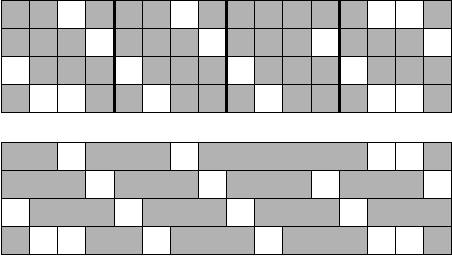
Think of a TIFF file as a grid of black and white squares. Each pixel represents a square. The converter translates each "black" pixel into a square in MEBES format. As a user, you determine the size of the square; so the DPI set in the TIFF file is advisory only.
In principle, you can set the MEBES square to any size you like - but there are some practical limits to deal with. The MEBES database is grid based and when we define a MEBES square we must define the corners therefore the pixel size should be an integral multiple of the grid size.
It is useful to know that standard grid sizes in the IC industry are 0.25 um, 0.5 um and 1.0 um. You should not specify a grid smaller than you need - the MEBES file may become larger; mask cost increase rapidly with decreasing grid size.

TIFF monochrome files are very compact - not only does each pixel require only a single bit, but recurring bits are further compressed using either a packbits or LZW scheme. The MEBES database, while compact will still be much much larger than the TIFF file -- typically from 5 to 50 times larger.

In order to keep the MEBES file from growing out of control, TIFF2MEBES attempts to minimize the number of rectangles needed by combining adjacent rectangles (line by line.) The file size reduction depends of course on the nature of the image - highly regular images might compress 25:1 while dithered images might see only a very slight compression.